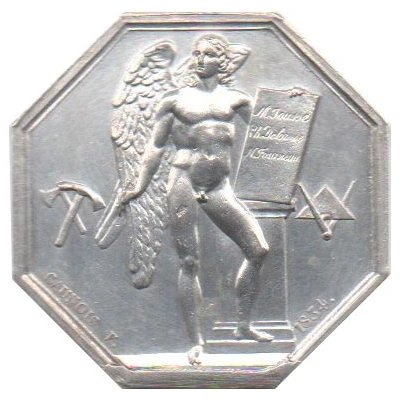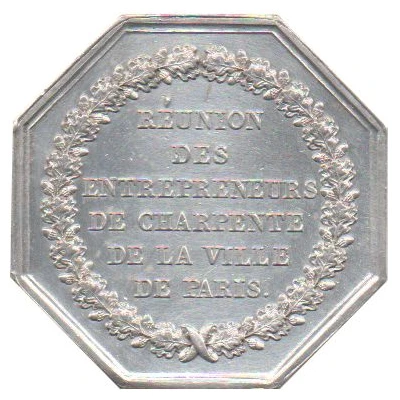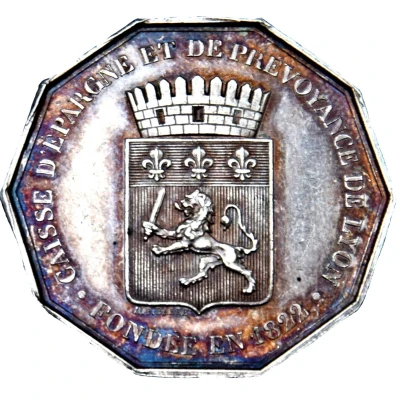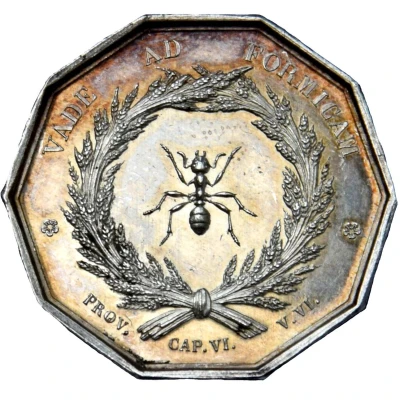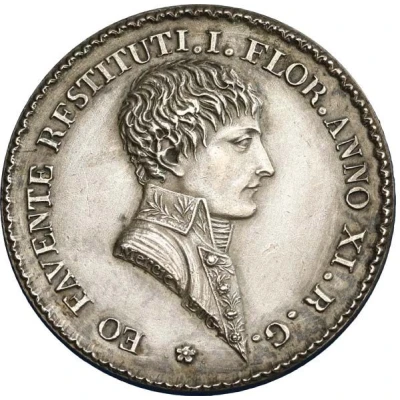
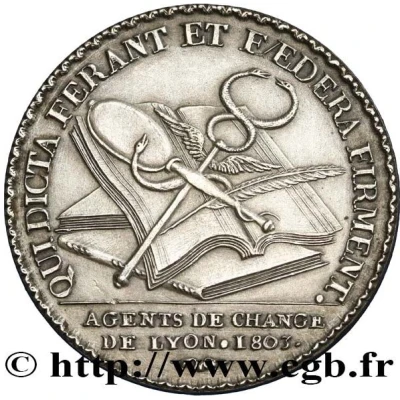

© CGB
Token - Agents de change de Lyon 1803 ND
| Silver | 19.5 g | 31.5 mm |
| Location | France |
|---|---|
| Period | Second Republic (1848-1852) Third Republic (1870-1940) |
| Emperor | Napoleon III (Napoléon III) (1852-1870) |
| Type | Commemorative medals › Company, institution and association medals |
| Years | 1845-1880 |
| Currency | France - Trade and Bank Tokens |
| Composition | Silver |
| Weight | 19.5 g |
| Diameter | 31.5 mm |
| Thickness | 3 mm |
| Shape | Round |
| Technique | Milled |
| Orientation | Medal alignment ↑↑ |
| Updated | 2024-11-12 |
| Numista | N#198482 |
|---|---|
| Rarity index | 97% |
Reverse
Books of transfers on which are posed a caduceus, a mirror and a feather.
Script: Latin
Lettering:
QUI DICTA FERANT ET FÆDERA FIRMENT.
AGENTS DE CHANGE
DE LYON•1803.
Edge
Striée
or
Smooth with punch (hand) SILVER (June 12, 1845 - September 30, 1860) (bee) SILVER (October 1, 1860 - December 5, 1879) (horn) SILVER (since January 1, 1880)
Lettering: ARGENT
Comment
Feuardent 10766 (3 mm silver piéfort 17.5 to 20 g ⌀ 31.5 mm) This double-thickness strike is certainly a Second Empire "restitution" in the fashion of restitutions of Roman emperors' coins by their successors.Feuardent 10764 (1.5 mm silver, 9 to 10 g ⌀ 31.5 mm)
Feuardent 10765 (1.5 mm gilt copper variety ⌀ 31.5 mm)
Claude Antoine Mercié, born in Gray and died in Lyon in 1812, was one of the founders of the "Société des Artistes Réunis", which produced the revolutionary bell metal strikes in Lyon.
